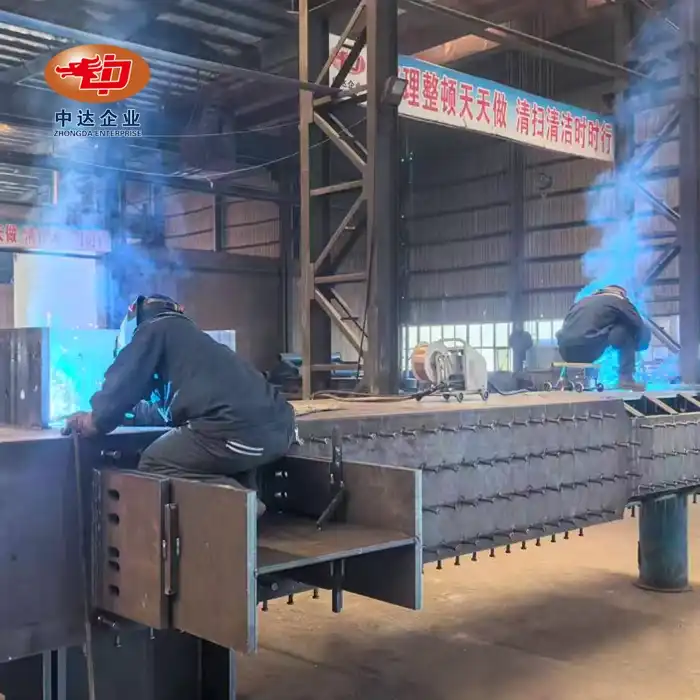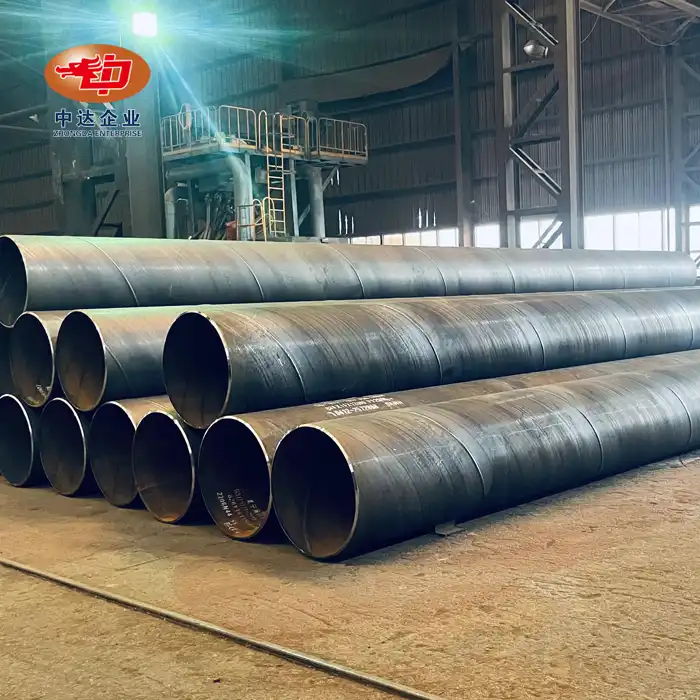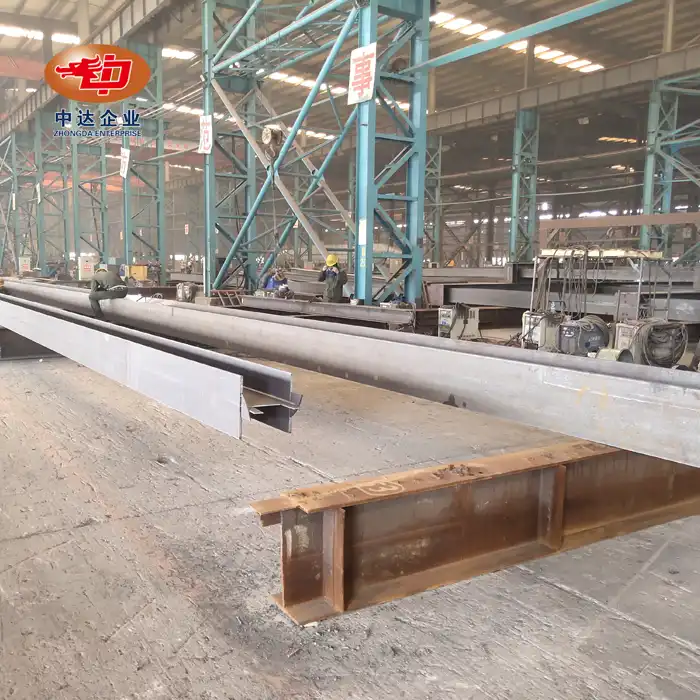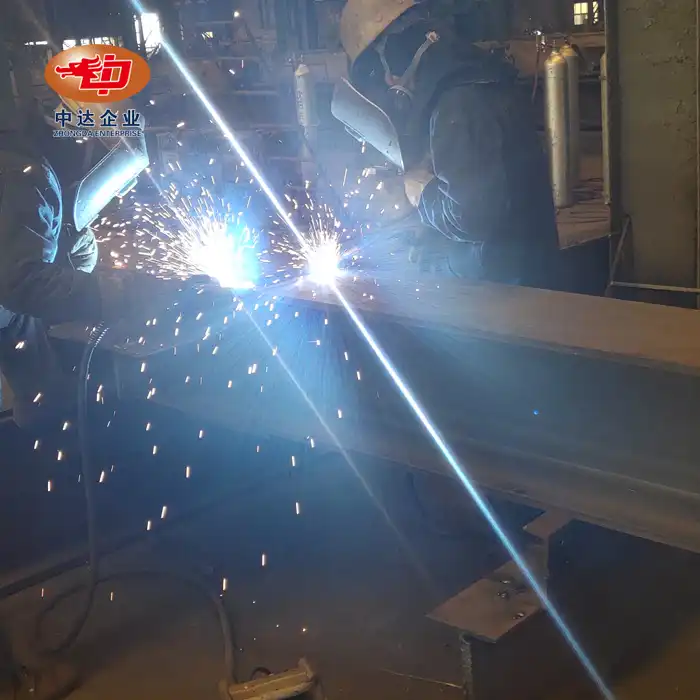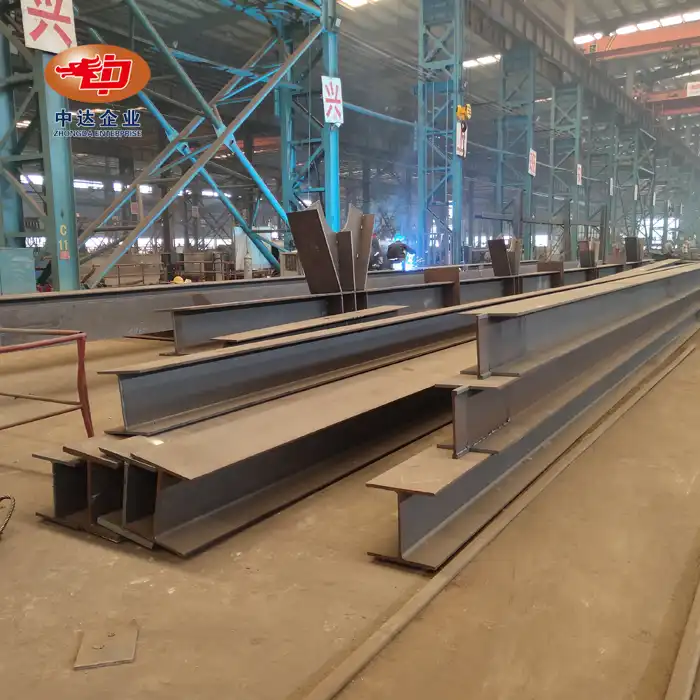
How Can H-Section Plate Girders Resist Corrosion in Coastal Salt-Fog Environments?
H-section plate girders, especially hot-rolled varieties, face significant challenges in coastal salt-fog environments. To combat corrosion, a multi-faceted approach is crucial. This includes using corrosion-resistant materials like stainless steel composite plates (e.g., SUS304 bonded with carbon steel) or aluminum-magnesium alloy coatings. Additionally, incorporating a concrete encasement design can provide an extra barrier against salt spray. Regular maintenance, facilitated by advanced corrosion monitoring systems, is also essential for long-term durability. At Zhongda Steel, we leverage our expertise in -60°C Weathering Steel Anti-corrosion Technology to deliver superior solutions for harsh coastal conditions.
Understanding the Corrosion Challenge in Coastal Environments
The Impact of Salt-Fog on Steel Structures
Coastal environments present a formidable challenge to steel structures, particularly H-section plate girders. The combination of high humidity, salt-laden air, and fluctuating temperatures creates an aggressive corrosive atmosphere. Salt particles in the air settle on metal surfaces, forming a thin electrolyte film that accelerates the electrochemical corrosion process. This continuous exposure can lead to rapid deterioration of unprotected steel, compromising the structural integrity of bridges, piers, and other coastal infrastructure.
Unique Vulnerabilities of H-Section Plate Girders
H-section plate girders, while structurally efficient, have specific vulnerabilities in salt-fog environments. Their complex geometry, including flanges and web interfaces, can trap moisture and salt deposits, creating localized corrosion cells. The varying thickness of different sections can lead to differential corrosion rates, potentially causing stress concentrations and accelerated degradation. Understanding these unique challenges is crucial for developing effective corrosion resistance strategies.

Economic Implications of Corrosion in Coastal Structures
The economic impact of corrosion in coastal structures is substantial. Frequent maintenance, repairs, and potential structural failures can result in significant costs and operational disruptions. For instance, a major bridge closure due to corrosion-induced damage can have far-reaching economic consequences for local communities and industries. Investing in corrosion-resistant solutions for H-section plate girders is not just a technical necessity but also a long-term economic imperative.
Innovative Materials and Coatings for Enhanced Corrosion Resistance
Advanced Composite Materials: Stainless Steel and Carbon Steel Combinations
One of the most effective strategies for enhancing corrosion resistance in H-section plate girders is the use of advanced composite materials. Stainless steel composite plates, such as SUS304 bonded with carbon steel, offer an excellent balance of corrosion resistance and structural strength. The stainless steel layer provides superior resistance to salt-fog corrosion, while the carbon steel core maintains the necessary structural properties. This composite approach allows for optimized material usage, reducing overall weight and cost compared to solid stainless steel construction.
Aluminum-Magnesium Alloy Coatings: A Cutting-Edge Solution
Aluminum-magnesium alloy coatings represent a cutting-edge solution for protecting H-section plate girders in coastal environments. These coatings form a passive oxide layer that provides excellent resistance to salt-fog corrosion. The addition of magnesium enhances the coating's ability to self-heal minor damage, further improving long-term performance. At Zhongda Steel, we've pioneered the application of these advanced coatings, ensuring they adhere uniformly to complex H-section geometries for comprehensive protection.
Concrete Encasement: A Robust Barrier Against Salt-Fog
Incorporating concrete encasement into the design of H-section plate girders offers an additional layer of protection against salt-fog corrosion. This approach involves encasing parts or all of the steel structure in high-performance concrete. The alkaline environment provided by the concrete helps to passivate the steel surface, while also serving as a physical barrier against salt and moisture ingress. When combined with corrosion-resistant steel or coatings, concrete encasement creates a multi-layered defense system, significantly extending the structure's lifespan in aggressive coastal environments.

Proactive Maintenance and Monitoring Strategies
Implementing Corrosion Monitoring Systems
Proactive maintenance begins with effective monitoring. Advanced corrosion monitoring systems play a crucial role in preserving the integrity of H-section plate girders in coastal environments. These systems typically employ a network of sensors strategically placed across the structure to detect early signs of corrosion. Electrochemical sensors can measure corrosion rates in real-time, while fiber optic sensors can detect changes in strain that might indicate corrosion-induced weakening. By providing continuous, real-time data on the structure's health, these monitoring systems enable timely interventions before significant damage occurs.
Regular Inspection and Cleaning Protocols
Even with advanced materials and monitoring systems, regular physical inspections remain essential. Developing a comprehensive inspection protocol tailored to coastal environments is crucial. This should include visual inspections for signs of corrosion, such as rust staining or paint blistering, as well as more in-depth assessments using non-destructive testing methods like ultrasonic thickness measurements. Regular cleaning to remove salt deposits and debris is also vital. High-pressure washing with fresh water can effectively remove salt accumulations, while specialized cleaning agents can be used for more stubborn deposits.
Preventive Maintenance and Repair Strategies
Preventive maintenance goes beyond monitoring and cleaning. It involves a proactive approach to addressing potential issues before they escalate. This can include periodic reapplication of protective coatings, especially in high-stress areas prone to coating damage. For H-section plate girders, particular attention should be paid to joints, connections, and areas where water might accumulate. When corrosion is detected, prompt repair is crucial. This might involve localized treatment and recoating for minor issues, or more extensive interventions like steel plate reinforcement or partial replacement for more severe damage. Zhongda Steel's expertise in precision fabrication allows for seamless integration of repairs and reinforcements, ensuring the structural integrity is maintained.
Conclusion
Protecting H-section plate girders in coastal salt-fog environments demands a multifaceted approach. By combining innovative materials like stainless steel composites and aluminum-magnesium alloy coatings with robust design strategies such as concrete encasement, we can significantly enhance corrosion resistance. Coupled with proactive maintenance and advanced monitoring systems, these solutions offer a comprehensive defense against the harsh realities of coastal corrosion. As we continue to push the boundaries of materials science and structural engineering, the future of coastal infrastructure looks more resilient than ever.
Contact Us
For expert guidance on implementing these advanced corrosion resistance strategies for your coastal projects, reach out to Zhongda Steel. Our team of specialists, backed by our state-of-the-art 120,000m² facility and cutting-edge technologies like BIM-driven prefabrication, low-temperature resistant hot-rolled H-section plate girder, and -60°C Weathering Steel Anti-corrosion Technology, is ready to deliver tailored solutions that stand the test of time and nature. Contact us at Ava@zd-steels.com to explore how we can enhance the longevity and performance of your coastal structures.
References
Zhang, L., & Wang, Y. (2020). Corrosion Resistance of H-Section Steel Girders in Marine Environments: A Comprehensive Review. Corrosion Science, 168, 108595.
Chen, H., et al. (2019). Advanced Composite Materials for Coastal Infrastructure: Performance and Applications. Journal of Composites for Construction, 23(3), 04019014.
Tan, K. H., & Zhou, W. (2021). Concrete-Encased Steel Structures: Design, Durability, and Performance in Aggressive Environments. Structural Engineering International, 31(1), 102-111.
Li, Q., et al. (2018). Real-Time Corrosion Monitoring of Coastal Bridges Using Wireless Sensor Networks. Structure and Infrastructure Engineering, 14(7), 869-882.
Melchers, R. E., & Jeffrey, R. (2022). Probabilistic Models for Steel Corrosion Loss and Time to First Repair in Marine Environments. Reliability Engineering & System Safety, 217, 108080.
Park, J. H., & Ann, K. Y. (2019). Durability Performance of Aluminum-Magnesium Alloy Coatings for Steel Structures in Marine Environments. Coatings, 9(11), 726.
YOU MAY LIKE










